
Culture
21:54, 13-Feb-2018
Tiger and bear: Stories behind the mascots of PyeongChang Olympics
By Li Bin
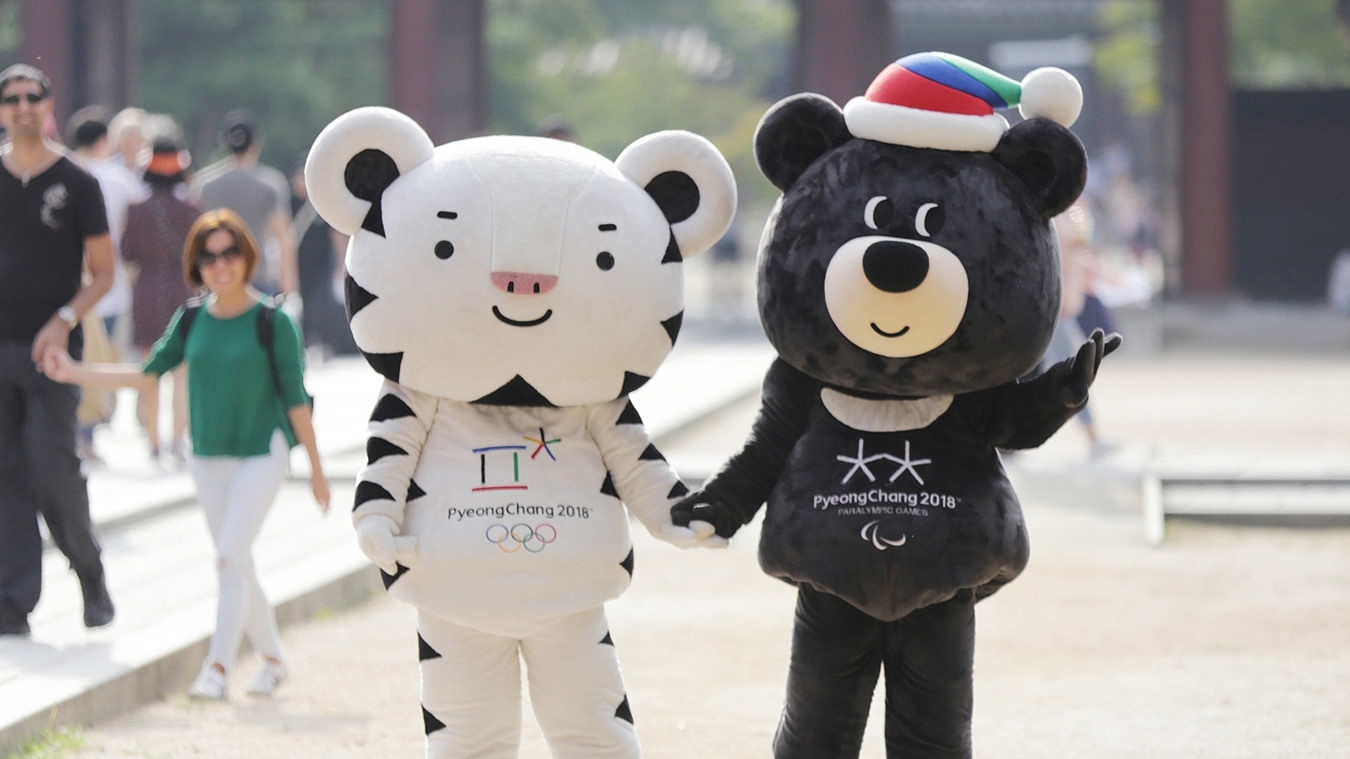
The Koreans love tigers. The 2018 PyeongChang Olympics opening ceremony began with five children entering the Olympic Stadium with a gigantic black-stripped white tiger puppet. The white tiger, often seen as a terrifying creature, is also the inspiration of the mascot of the PyeongChang Games – Soohorang.
Soohorang the tiger, together with his companion Bandabi the bear, the mascot of the Paralympic Games, have amassed huge fandom for their cute looks.
So why is a tiger and a bear the mascots of the South Korean Games?
Guardian of the Korean people
While the choice may confuse numerous people with little or no knowledge of Korean culture, the tiger and bear have, in fact, existed in the peninsula's history for centuries.
Before we dig into the past days, let's take a look at the names of the mascots first.

Fans pose for a photo with Soohorang the mascot during the PyeongChang 2018 Winter Olympic Games, Feb. 11, 2018. /VCG Photo
Fans pose for a photo with Soohorang the mascot during the PyeongChang 2018 Winter Olympic Games, Feb. 11, 2018. /VCG Photo
Soohorang can be divided into two major syllables – "sooho" and "rang." Sooho means protection in Korean, symbolizing "the protection offered to the athletes, spectators and other participants of the 2018 Games," according to the official Olympics website.
Rang is a syllable found in two relative terms in Korean – "Horangi" and "Jeong-seon Arirang." Horangi means tiger in Korean while Jeong-seon Arirang is the traditional folk song of the province in which the PyeongChang Games is held.
"Soohorang is strong and fearless with a spirit of challenge. He is also full of curiosity and loves people in general. He's resilient in the cold and likes winter sports," Lee Hee-gon, head of Mass C&G, which created the mascots, told news portal United Press International (UPI).
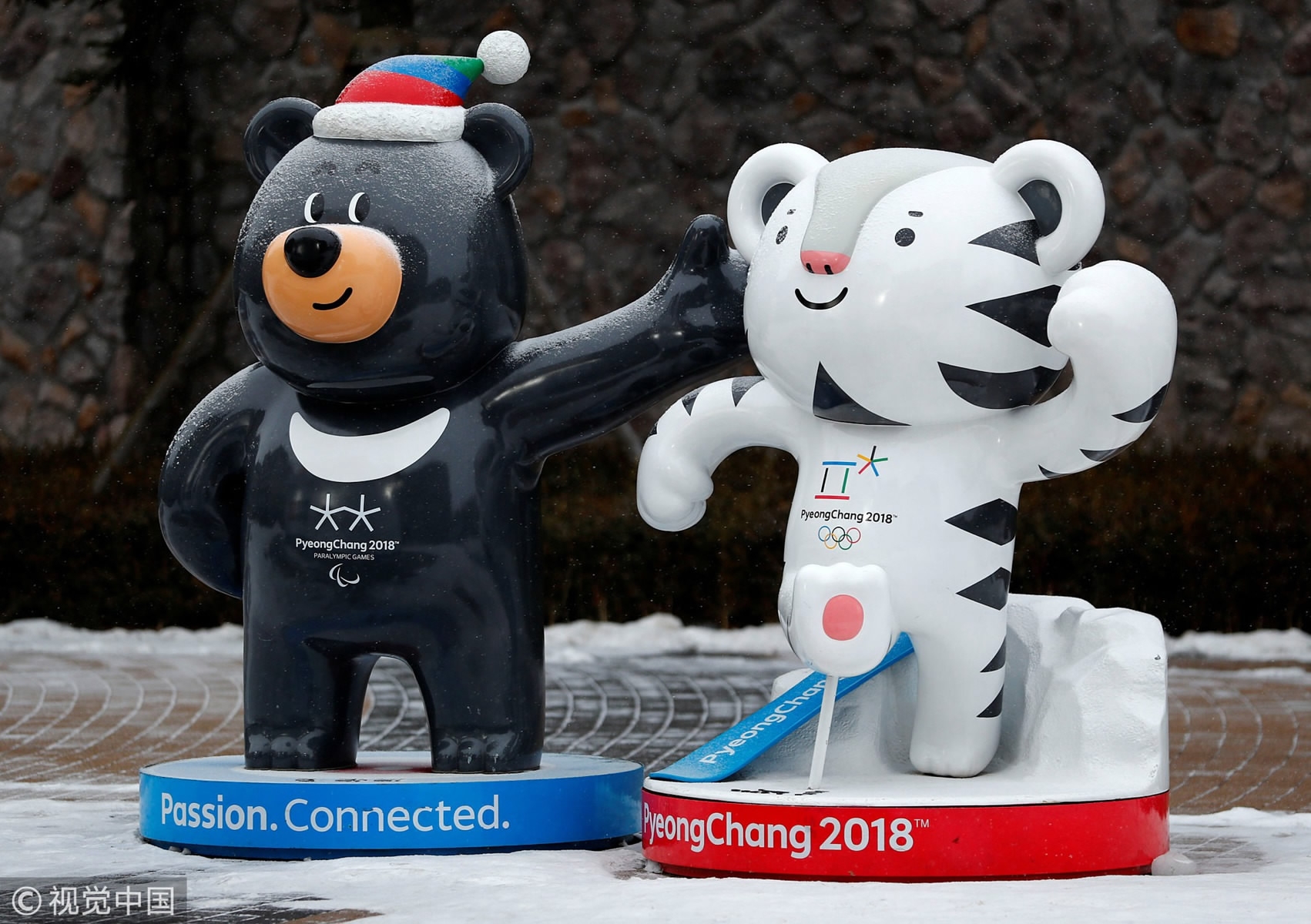
The 2018 PyeongChang Winter Olympics mascot Soohorang (R) and Paralympics mascot Bandabi. /VCG Photo
The 2018 PyeongChang Winter Olympics mascot Soohorang (R) and Paralympics mascot Bandabi. /VCG Photo
If you remember the 1988 Summer Olympics in Seoul, the mascot was also a tiger – an orange Siberian tiger called Hodori.
Tigers have appeared not only in Korean mythologies and folklores but also in Korean arts such as painting and sculpture. White tiger is one of the four guardians protecting the land in Korean culture, along with the Blue Dragon, the Vermillion Bird, and the Black Tortoise.
A tiger will turn white once it overcomes trials and tribulations and understands the world, according to Korean folklore. Scary as it may be, the white tiger does not harm the people. But it could become very angry once the ruler of the country turns evil.
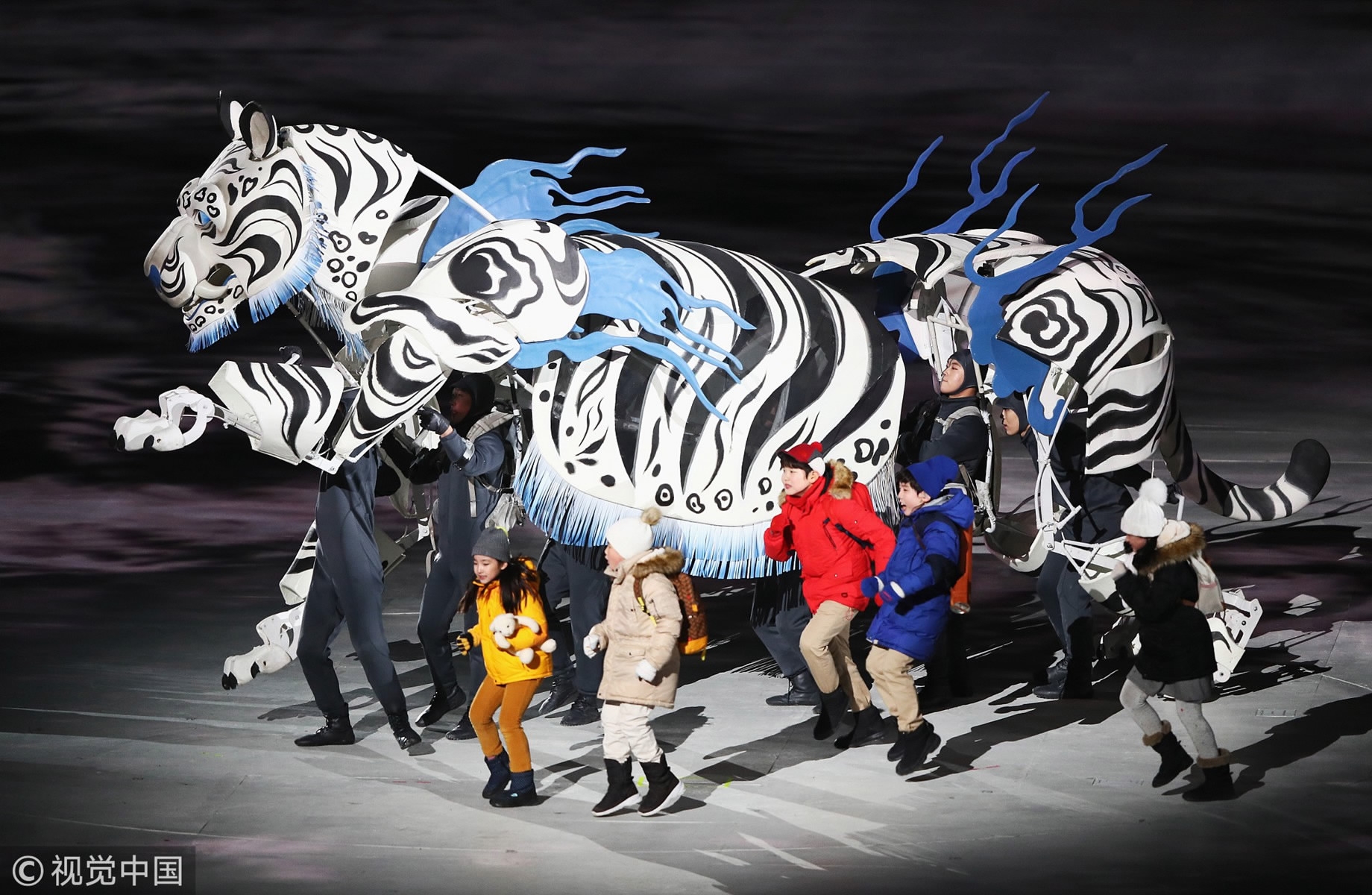
Performers enter the Olympic Stadium during the 2018 PyeongChang Olympics opening ceremony, Feb. 9, 2018. /VCG Photo
Performers enter the Olympic Stadium during the 2018 PyeongChang Olympics opening ceremony, Feb. 9, 2018. /VCG Photo
The tigers can be found in royal tombs as well. The most famous one would be the Royal Tombs of the Joseon Dynasty, a UNESCO World Heritage Site, where stone tiger statues were set up to protect the underground realm.
In the 20th Century, when the Korean fell into Japanese colony, the tiger evolved into a symbol of ethnic pride and identity. And in the modern era, the tiger transformed into a nationalistic symbol of economic strength.
Another theory goes that the shape of the Korean Peninsula resembles a tiger, making it the best creature to represent Korea.
A story of companionship
The Paralympic mascot Bandabi was inspired by the symbolic animal of Gangwon Province, the wider region where PyeongChang is located.
The name is also a combination of Korean words – "bandal," meaning half-moon and "bi," which means celebration.
"Bandabi has a big heart full of warmth. His merits are strong will, endurance and courage. Also, she is trustworthy with a solid personality. She lives in Gangwon-do where the mountains meet the sea and also enjoys winter sports," said Lee Hee-gon.
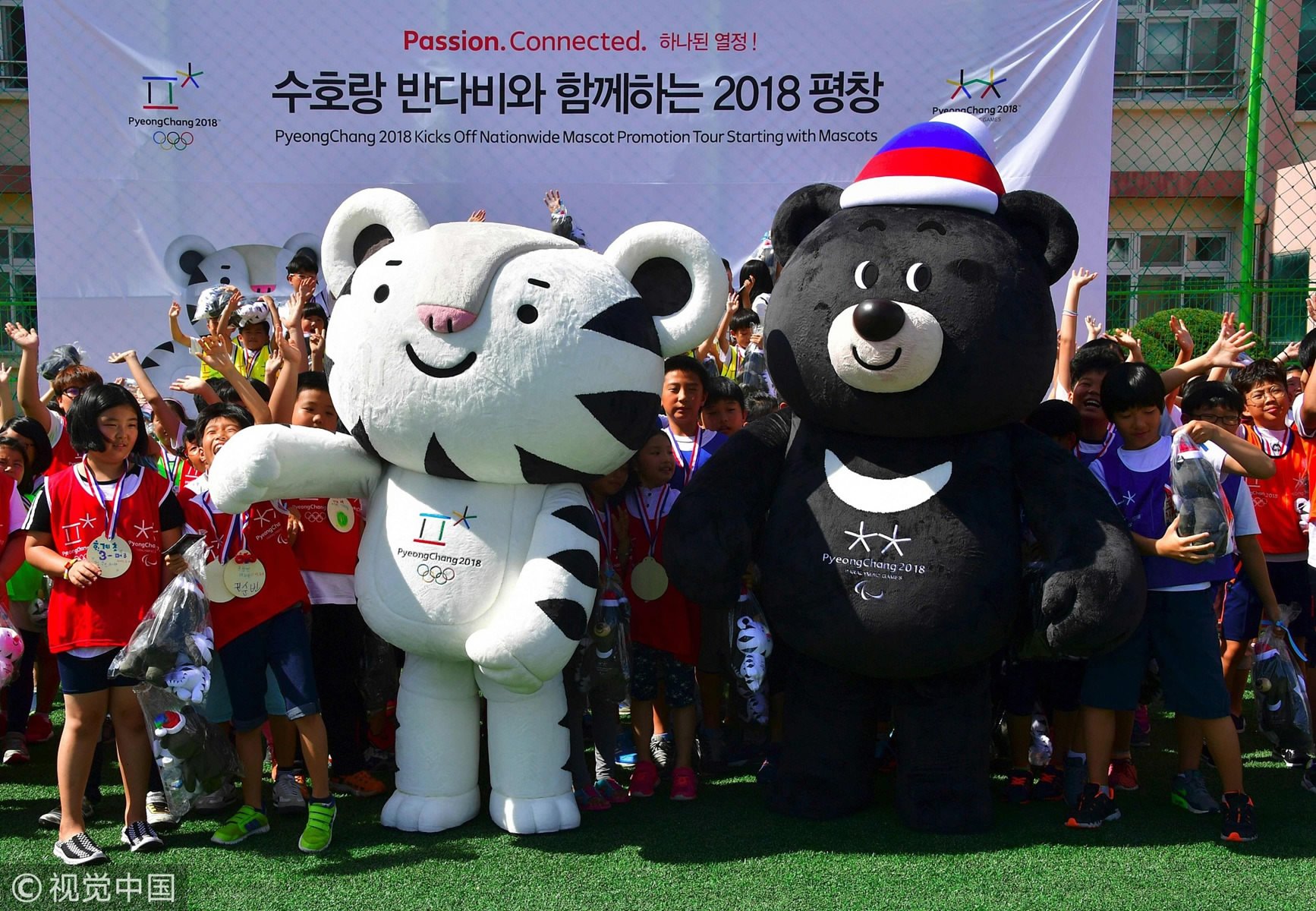
South Korean students pose with the mascots for the 2018 PyeongChang Winter Olympics, July 18, 2016. /VCG Photo
South Korean students pose with the mascots for the 2018 PyeongChang Winter Olympics, July 18, 2016. /VCG Photo
The pairing of Soohorang the tiger and Bandabi the bear is a story of companionship dating back thousands of years before the founding of the Korean nation.
In Korean legends, a tiger and a bear lived in a cave and prayed to God to become human beings. Their wish can only become true if they can only eat mugwort and garlic for 100 days in the cave. The tiger gave up after 20 days but the bear succeeded and turned into a woman who gave birth to the founder of Korea.
"Soohorang is always curious and easily excitable, bounding left and right, but Bandabi is calm and collected, holding Soohorang back by the hand," Lee told UPI.
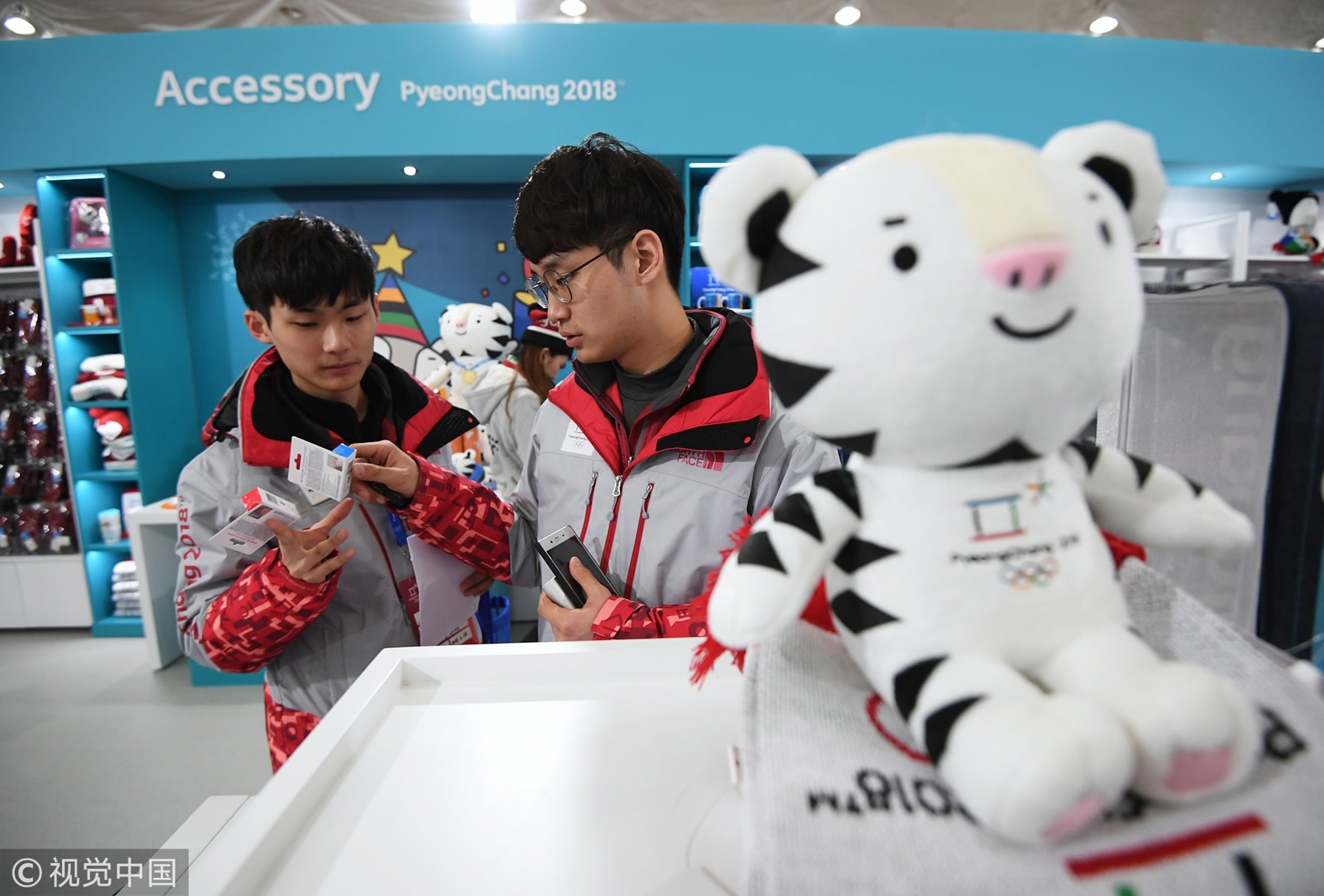
Visitors at the PyeongChang 2018 Official Store. /VCG Photo
Visitors at the PyeongChang 2018 Official Store. /VCG Photo
The duo proved to be a smash. They took South Korea by storm and created huge market demands.
Data show that 200,000 set of limited edition emoticons were sold out in a matter of hours after its release last year. And more than 100,000 official mascot dolls have been sold as of early February, according to the PyeongChang Olympic Organizing Committee.

SITEMAP
Copyright © 2018 CGTN. Beijing ICP prepared NO.16065310-3
Copyright © 2018 CGTN. Beijing ICP prepared NO.16065310-3